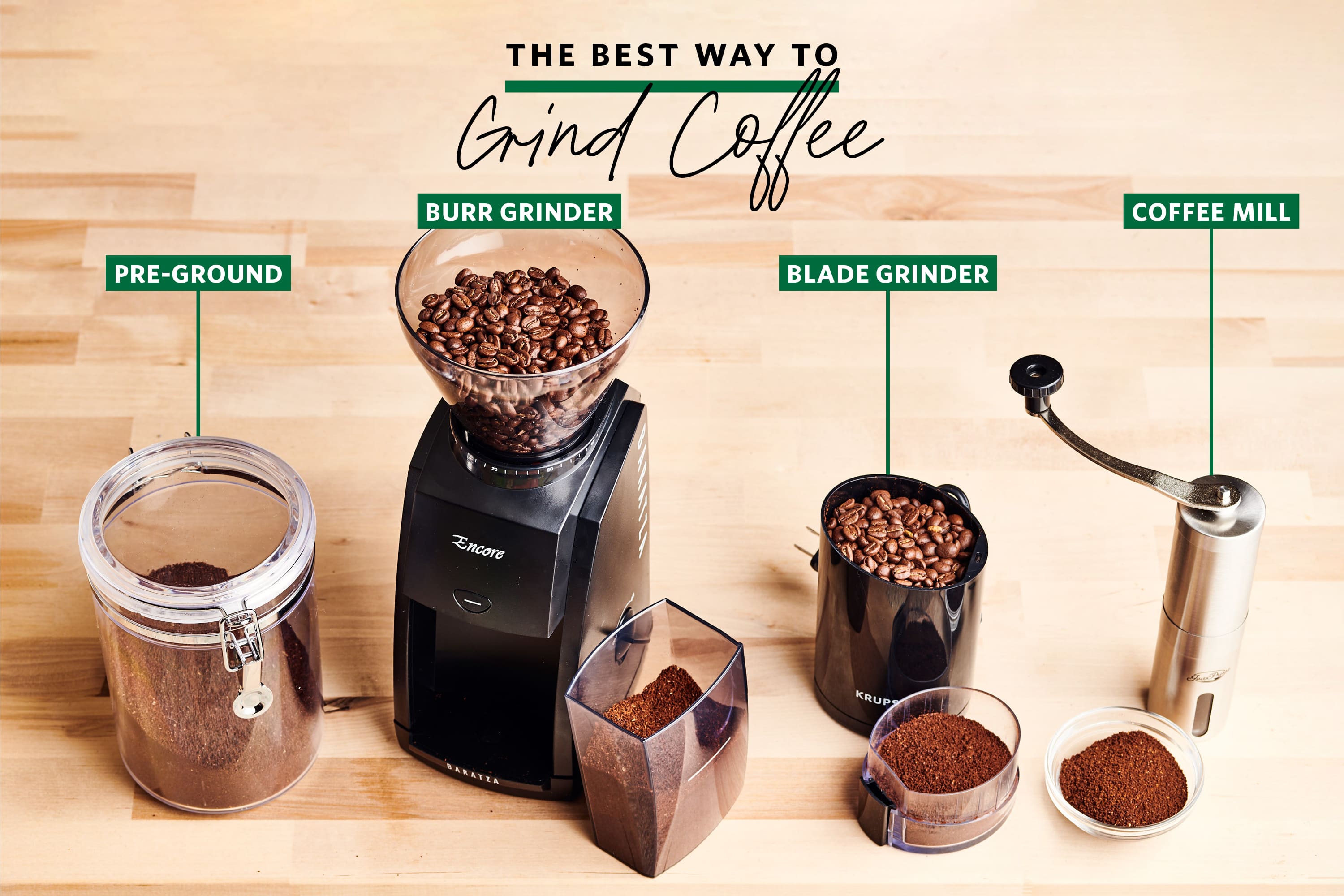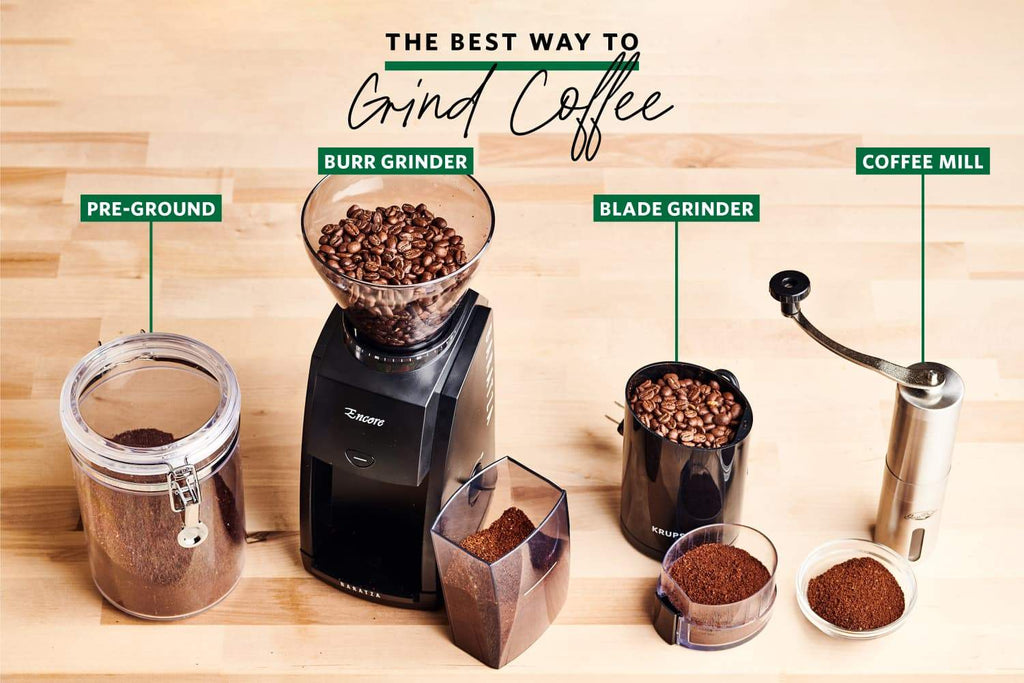You might think grinding coffee beans is simple—just a quick buzz and you’re done. But how long you grind your beans can change everything about your cup of coffee.
Grind too little, and your coffee might taste weak. Grind too much, and it could turn bitter or gritty. If you’ve ever wondered how to get that perfect balance, you’re in the right place. Keep reading, and you’ll discover exactly how long you should grind your coffee beans to unlock the best flavor every time.

Credit: kauaicoffee.com
Grinding Basics
Grinding coffee beans is a key step in making good coffee. The way you grind affects flavor and strength. Understanding grinding basics helps you choose the right grind size and tool. This section covers why grind size matters and the types of grinders available.
Why Grind Size Matters
Grind size controls how fast water extracts coffee flavor. Fine grinds let water pass slowly, making strong coffee. Coarse grinds let water flow fast, making lighter coffee. Too fine or too coarse can cause bitter or weak taste. Matching grind size with brewing method gives the best flavor.
Types Of Coffee Grinders
Blade grinders use spinning blades to chop beans unevenly. They are cheap but less consistent. Burr grinders crush beans between two plates for uniform size. They cost more but make better coffee. Manual grinders are quieter and good for travel. Electric burr grinders are best for home use.
Grind Time Factors
Grinding coffee beans is not just about time. Several factors influence how long you should grind. These factors help get the best taste from your coffee. Understanding them improves your brewing experience.
Bean Type And Roast Level
Different beans have different hardness. Hard beans need more grinding time to break down. Soft beans grind faster and need less time.
Roast level also affects grind time. Dark roast beans are brittle and grind quickly. Light roast beans are denser and take longer to grind.
Desired Brew Method
The brewing method changes grind size and time. For espresso, you need a fine grind and longer grinding. French press requires a coarse grind and shorter grinding.
Drip coffee needs a medium grind and moderate time. Adjust grind time to match your brewing style for better flavor.
Optimal Grinding Times
Grinding coffee beans for the right amount of time affects the taste of your coffee. The grind size depends on your brewing method. Each size needs a specific grind time to get the best flavor.
Too long or too short grinding can spoil the coffee. The goal is to have the right texture for your brewing style. Below are the ideal grinding times for different grind sizes.
Coarse Grind Timing
Coarse grind looks like sea salt. It suits French press and cold brew. Grind beans for about 15 to 20 seconds. This time makes big, even particles. It helps water flow slowly and extract rich flavor.
Medium Grind Timing
Medium grind feels like sand. It works well for drip coffee makers. Grind beans for 10 to 15 seconds. This creates a balanced texture. It allows water to pass at a good speed. This timing helps get smooth, clear coffee.
Fine Grind Timing
Fine grind is like table salt or sugar. It fits espresso machines and Aeropress. Grind beans for 5 to 10 seconds. This makes very small particles. It helps extract strong and bold coffee fast. Grinding too long can cause bitterness.
Tips For Consistent Grinding
Grinding coffee beans consistently helps make better coffee every time. The right grind size affects taste and strength. Small changes in grind time can change flavor. Follow simple tips to get steady results from your grinder.
Consistency means using the same grind size and time for each brew. This helps avoid bitter or weak coffee. It also saves beans and avoids waste. Let’s explore easy ways to keep your grind steady.
Measuring Grind Duration
Use a timer to track how long you grind beans. Start with a short time like 10 seconds. Check the coffee grounds after each grind. Adjust time until the size matches your brew method. Use the same timer setting every time. This ensures uniform grind size and better flavor.
Some grinders have built-in timers. Use them to keep grind time steady. If your grinder does not have one, a phone timer works well. Avoid guessing grind time. Measuring helps reduce mistakes and improves taste.
Adjusting For Grinder Variations
Not all grinders work the same. Some grind faster or slower. Check your grinder’s manual for recommended times. Test your grinder to find the best duration. Small changes in bean type or age may need time adjustments.
Clean your grinder regularly to keep it working well. A dirty grinder can change grind size and speed. Adjust grind time if you change beans or grind settings. Keep notes of your settings to repeat good results.
Common Grinding Mistakes
Grinding coffee beans is more than just a step in brewing. It affects the taste and quality of your coffee. Many people make common mistakes that hurt the flavor. Avoiding these errors can improve your coffee experience.
Two main mistakes are grinding too much or too little. Both can cause problems that ruin your brew. Let’s explore these issues to help you grind better.
Overgrinding Effects
Grinding coffee too fine can cause over-extraction. This means the water pulls too many bitter flavors. Your coffee may taste harsh and unpleasant. Overground coffee also clogs filters and slows brewing. This leads to uneven water flow and bad taste. Avoid grinding longer than needed. Use the right grind size for your brewing method.
Undergrinding Issues
Grinding too coarsely causes under-extraction. The water passes through too fast. It does not get enough flavor from the beans. Coffee tastes weak and sour. Underground coffee may also leave grains in the cup. This creates a gritty texture that many dislike. Match your grind size to your coffee maker. Adjust the grind time for a balanced taste.

Credit: www.thekitchn.com

Credit: nusacoffeecompany.com
Frequently Asked Questions
How Long Should You Grind Coffee Beans For Espresso?
Grind coffee beans for espresso for about 10-15 seconds. The grind should be fine and consistent. This timing ensures optimal flavor extraction and a balanced shot.
What Is The Ideal Grind Time For French Press Coffee?
Grind beans for French press coffee for around 20-30 seconds. You want a coarse, even grind to avoid sediment and bitterness.
How Does Grind Time Affect Coffee Flavor?
Longer grind time results in finer grounds, increasing bitterness. Shorter grind time produces coarser grounds and a milder taste. Proper timing balances flavor and extraction.
Can Over-grinding Coffee Beans Ruin The Brew?
Yes, over-grinding coffee beans leads to too fine grounds. This causes over-extraction, bitterness, and a harsh taste in the coffee.
Conclusion
Grinding coffee beans just right takes practice and attention. Too long or too short changes the taste and strength. Use the right grind size for your brewing method. Freshly ground beans always give better flavor. Experiment with grind time to find what you like best.
Enjoy the process as part of your coffee routine. Great coffee starts with simple, careful grinding. Keep it simple, and your coffee will taste better every time.







